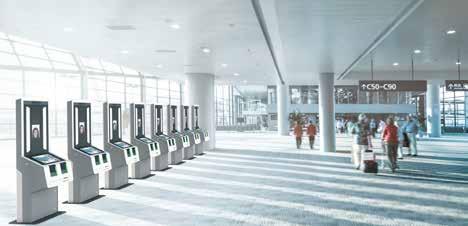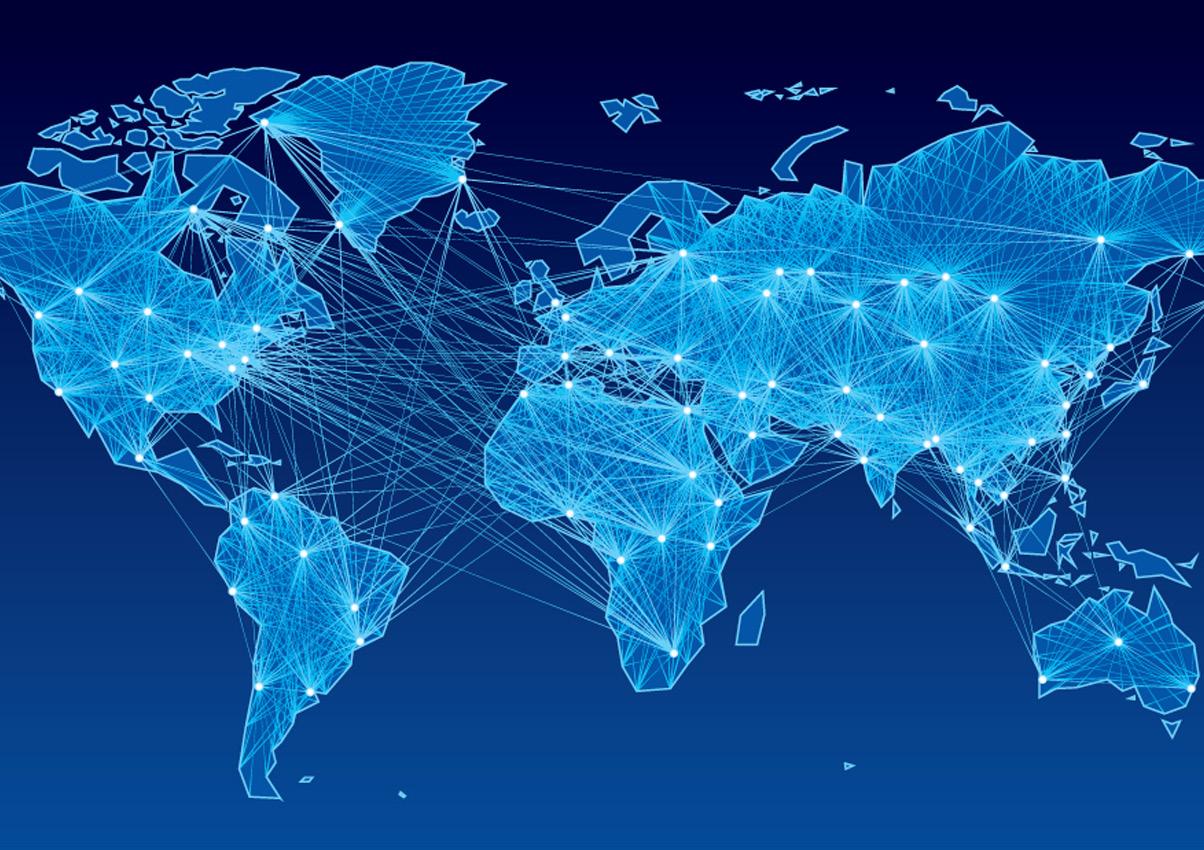
10 minute read
Fighting drug trafficking in the Golden Triangle
Drug trafficking has long been a problem in the Golden Triangle, the region where Thailand’s Chiang Rai province meets Myanmar and Laos. In this blog, Gita Sabharwal, UN Resident Coordinator in Thailand, and Jeremy Douglas, who represents the UN Office on Drugs and Crime (UNODC) in Southeast Asia and the Pacific, explain how the United Nations and the Thai government are working together to tackle the issue. “Thailand has made considerable progress in combating the opium trade over recent decades and represents global good practices. UNODC has a longterm partnership with the Thai government and other stakeholders to combat drug trafficking in the Golden Triangle and, from the military base at Doi Chang Mub overlooking Myanmar, joint patrols are conducted on a regular basis to counter trafficking. However, as the opium trade has declined, the cross-border movement of synthetic drugs, and particularly methamphetamine, has grown substantially.
Link between development and fighting the drugs trade
Advertisement
In our meetings on a recent trip to the province, we were impressed with local efforts to develop the region in a sustainable way. It really struck home how integrally linked development and improving people’s livelihoods are to fighting the drugs trade, and tackling the corrosive effects drug abuse and criminality have on individuals and communities. While there are considerable challenges, particularly during the COVID-19 pandemic, we were also inspired by the community resilience and commitment to improve the welfare of all.
The border regions between Thailand and its neighbours, along the Mekong River, have experienced a continuous expansion of drug production, trafficking and use, particularly of synthetic drugs, for the better part of a decade.
In 2019, seizures of harmful methamphetamine in East and Southeast Asia reached 140 tons, with the vast majority produced in Myanmar’s Shan State, just across the border from Thailand. With the rise of production in Myanmar, its borders with Thailand and Laos have become one of the most significant drug trafficking points in the world.
Billions in illicit profits
It is estimated that drug production and trafficking in the region last year generated profits of at least $71 billion, with methamphetamine accounting for $61 billion, four times what it was six years ago. Today, the production and trafficking of methamphetamine is the financial backbone of transnational organized crime and the ethnic armed groups that they partner with for control of autonomous territories in Myanmar, fuelling conflict and insecurity in the country, and along its borders including with Thailand. In addition, despite record amounts of methamphetamine seizures, the supply has surged and the price of the drug has recently dropped to its lowest point in a decade. One methamphetamine tablet, known as “yaba” in Thailand and the Mekong region, currently costs only about 50 baht ($1.60) in the northern area of Thailand, making the drug much more accessible to drug users or potential users. In part, as a result of the low street price and affordability, Thailand has seen a significant increase in use, particularly among youth. Considering 80 per cent of the Thai prison population is incarcerated due to methamphetamine-related charges of one form or another, it is very evident that increased trafficking and decreased prices of the drug have accelerated and exacerbated challenges to the criminal justice system and related human rights in the country.
Coordination and education
Border Liaison Offices supported by UNODC have been an important component in border management and control in the region, as well as a practical way to improve cross-border cooperation between authorities. Coordination efforts between police, customs, army, navy and border patrol police in the region have gathered and
exchanged intelligence to take on organized criminal groups. Employing new technologies including X-ray devices, from hand-held to lorry-sized machines, Thai authorities have new tools to be used against illicit trafficking, including of drugs and precursor chemicals – vital to countering the destructive trade.
The number of border checkpoints has been increased in response to COVID-19, reducing the transit of drugs through the province. However, criminal networks have very quickly adapted; traffickers have changed their routes to circumvent Chiang Rai and go through other provinces or via Laos and back into Thailand, with marginal increased costs and inconvenience affecting the trade.
Innovating for a sustainable future
Chiang Rai’s economy will probably remain largely based on agriculture, tourism and cross-border trade for the foreseeable future. In the agriculture and tourism sectors, innovative approaches are providing examples for a sustainable future. The Mayor of Chiang Rai City, for example, is promoting an approach that supports sustainable and chemical-free agriculture, connecting Chiang Rai’s farmers with schools, hospitals and export markets.

Image © UNODC Gita Sabharwal, UN Resident Coordinator in Thailand (right), and UNODC’s Jeremy Douglas (centre) receive a briefing at the Customs house in Mae Sai in the north of the country.
Hill tribe villages have been encouraged, through civil society and social entrepreneurs, including the Mae Fah Luang Foundation, to move to alternative cash crops. More innovative support of this kind will help affected communities in Thailand, neighbouring countries and beyond, to move away from the drugs trade, towards sustainable livelihoods. There is a stark need for more alternative livelihoods, and crops, in agriculture-dependent communities, if they are to be a part of sustainable development. We are fortunate to engage with so many partners working towards sustainable development in Chiang Rai and look forward to providing more support as we collectively build back better from the pandemic.” By The UN Resident Coordinator The UN Resident Coordinator, sometimes called the RC, is the highest-ranking representative of the UN development system at the country level. In this occasional series, UN News is inviting RCs to blog on issues important to the United Nations and the country where they serve.
Sponsored Feature
KIOSK SYSTEMS – THE KEY TO BORDER CONTROL?
Over the last two decades, secunet has emerged as an innovative market leader in Europe offering mature and future-proof solutions for electronic identity protection as well as for reliable and efficient verification. e.g. ABC gates and self-service kiosk for secure and convenient biometric border control. It may have been an unprecedented year for travel, but as borders start to re-open and flights resume, robust border control systems that are quick and easy to use remain essential. And while selfservice technology has long been an essential part of the travel experience, kiosk systems will now play a pivotal role internationally to securely and efficiently manage new border control procedures.
EES
In Europe, deployment of kiosks is being driven by the rollout of the common biometric Entry/Exit System (EES), which all travellers from third countries will need to register with from 2022 onwards as part of the European Parliament’s Smart Borders Initiative. When entering the Schengen area via land, sea and air borders, Third Country Nationals (TCN) will be required to register with four fingerprints and facial image. This biometric data will be stored in the EES along with the traveller’s biographical and other information taken from their travel document.
While the policy will strengthen the EU’s borders, it will be complex and time consuming, presenting firstline border control officers with new
challenges related to how they can most efficiently use their time to focus on the most suspicious and high-risk travellers. Additionally, if queues build up at the border control point, it could affect transfer times, baggage collection and even flight schedules. One answer is to deploy automated and self-service kiosks. These have the advantage of optimising the passenger flow while also compensating for the extra time needed due to the additional step of biometric acquisition at the border. When a traveller is first registered, their biometric data is checked against an estimated 300 million records to ensure that they have not already been registered under a different identity, a process known as ‘deduplication’. This can take between 20 and 30 seconds because of the volume of data that has to be searched. Self-service systems can compensate for the long response time of the central EES system by allowing prior data registration and breakdown of the process times, as the time during which the passenger is moving to the border control desk can be used for the EES queries. Additionally, kiosks can also be used both for first-time registration and to help optimise processes for return travellers.
By enabling pre-enrolment of biometric data and prior interviewing of incoming travellers, kiosks massively reduce the workload of the border guards performing these controls. Language barriers can be overcome by conducting the entry interview at the kiosk in the traveller’s native language with the answers being directly translated for the official. With their integrated security mechanisms, kiosks also guarantee consistent data quality for the border control process. They ensure that the facial images captured are of a consistent quality and meet the requirements of ISO 19794-5:2011 and that fingerprints comply with NFIQ 2.0. State- of-theart liveness detection, monitoring functions and detection of spoofing attacks for face and fingerprint scans complete the high-level security line-up.
Cost
Automated systems represent good value for money. When considering total cost of ownership, kiosks often require lower levels of investment than traditional infrastructure and staffing models, are more flexible and easily scalable, and are more cost-effective in the long run.
Space
Border control points have long been concerned with how they can make most efficient use of space.

Kiosks are highly flexible because the waiting areas of self-service systems and stationary desks can be kept separate from each other. Also, because of their integrated monitoring functions, they do not need to be within view of the border control desks and can be configured in the most suitable way for a given location, such as next to each other in a row, at an angle in the middle of a room, back to back or in a circle.
System requirements
To ensure the maximum benefits are achieved from the use of kiosks, the system must be designed specifically for border control applications and satisfy all EES requirements, as well as performing quickly, securely, reliably and to a high standard. Compliance with ISO 19794-5:2011 and NFIQ 2.0 is essential for facial image acquisition and fingerprint capture. Another important system element is the use of anti-circumvention security based on presentation attack detection (PAD) technology. This will prevent spoofing attacks by recognising forged and falsified identity documents, spoofed faces
or fake fingerprints, as well as other types of attack.

The kiosk system should also feature additional surveillance cameras and smart security functions that detect inadmissible or suspicious situations, so that passengers can be monitored conveniently from a distance. Kiosks are a crucial element of Europe’s smart border control infrastructure. When deployed correctly they benefit not only the border control authorities, but also all other stakeholders, from airlines, airport and infrastructure operators to the travellers themselves.
WorldBorderSecurity.net




World Border Security Network (WorldBorderSecurity.net), a global network for agency officials at the borders. The purpose of the network is to encourage and facilitate inter-agency co-operation and communication. Members of the network will be able to:
• communicate securely • share information • share documents • share best practise

• view past presentations • keep up-to-date with the latest technology developments • share training opportunities • and more... WorldBorderSecurity.net is open to all World Border Security Congress government agency delegates past and present. Access is restricted to government and intergovernmental personnel; border, customs, immigration agency officials and specialist law enforcement officers. Non-delegate agency officials will also be welcome but by member invitation only.













